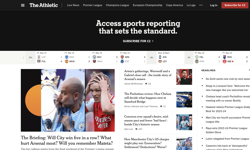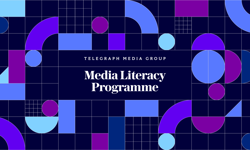The rise and rise of tablets in general, and the iPad in particular, was one of the recurring themes at last week’s PPA Conference in London.
“iPads have revolutionised the magazine”, said Future’s CEO Mark Wood. For the Economist’s Andrew Rashbass, the iPad had created a ‘lean back’ digital experience, where previous digital platforms had been lean forward. Their research showed that people were spending two hours reading the Economist on it! Unheard of previously in digital, because no one ever pretended that reading on the PC was anything other than an awful experience. That’s why we print everything out. Tablets heralded, said one speaker, a “return to the golden age of reading”.
The quality of the tablet reading experience is the salient fact for publishers.
The trend is clear. Millions of people are switching from print to tablet. When the Economist recently surveyed their US readers, they found that a majority of them expected to be reading the Economist digitally in two years’ time.
Over at Future, Mark Wood reported 25,500 monthly downloads of their T3 iPad edition, compared to 50,000 print sales. Yes, no one is pretending that tablet reading has overtaken print reading … yet. But the balance is shifting inexorably. Future’s digital revenues last year were up 41%.
Anthony Wing Kosner recently wrote a piece on Forbes.com, entitled ‘Tablets Will Take Over Sooner Than You Think: Five Telling Trends’, in which he quoted Apple CEO Tim Cook as saying: “the day when the tablet market (by units) will exceed that of traditional PCs will come sometime in the fall of 2013.”
OK, so you might say that just tells us that one type of computer is set to outsell another, but given the widely acknowledged quality of the reading experience combined with their rapidly increasing market penetration, consumer publishers would be foolish if they weren’t planning their tablet editions now.
The big publishers can see the writing on the wall. Yes, said Hearst’s Ella Dolphin at the conference, they still make 80% of their revenues in print, but 80% of their effort now goes into digital. Granted, not all of that 80% will be on tablets by any means, but the principle of spending most of your time on those areas of your business that currently bring in a minority of your revenues has been established.
Print cannot be ditched in the short term. Indeed, Mark Wood described the continuing decline in print sales as one of their biggest headaches, because that is still where the revenue is. Managing the transition from a print present to a digital future is the balancing act every publisher is grappling with. Ditch print too soon and you risk being left stranded when your revenues dry up. It is about pursuing a dual strategy.
Lots of smaller publishers are trapped on a cusp of indecision. They know where their revenues are coming from now, but they see the sales figures and know that they are heading in the wrong direction, and they hear the digital cacophony all around.
And they are bamboozled by choice. Do they go for the cheap digital replica or the expensive bells and whistles bespoke approach? Apple or Android? HTML5 or native app? Do it in-house or out? And, if the latter, which supplier? Help!!!
Pause. Important as these considerations are, publishers need to be mindful of the greater threat posed to their business by doing nothing. Doing nothing, waiting for the clouds of indecision to clear will mean you losing valuable time, both in terms of competitive advantage and also, as importantly, in terms of your own learning.
It is only by getting stuck in will you be able to make informed decisions further down the track and take full advantage of the trends identified at the conference.
I speak from personal experience. I bought an iPad just a couple of months ago and we are about to launch an iPad version of InPublishing magazine. Even before launch, the learning curve has been perpendicular.
Clearer choices and strategies are now starting to replace the fug that was there before.
I would suggest that if you’re a big brand, big circulation title, then dedicating the resource to a bespoke edition is probably worth the effort. If you’re a smaller circulation title, then a digital replica might be the safest bet.
But, as Future’s Mike Goldsmith wrote in his excellent article in the March/April issue of InPublishing, “The question shouldn't be which one you do. It should be which one do you do first.”
Go for it.










